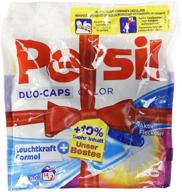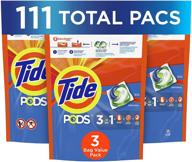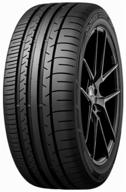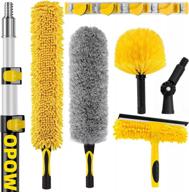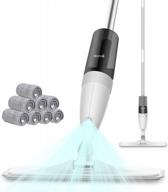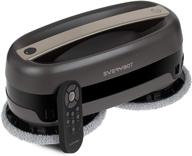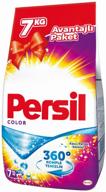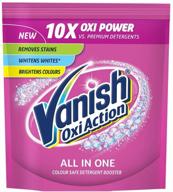Troubleshooting Common Laundry Problems
Doing laundry can sometimes be frustrating when you encounter issues like tough stains, wrinkled clothes, faded colors and strange odors. Fortunately, there are ways to troubleshoot these common laundry problems with some helpful tips and tricks.
Stains That Won't Come Out
We've all dealt with the headache of a stain that just won't budge no matter how much you wash it. Here are some tips for getting rid of stubborn stains:
- Check the laundry label - Use the warmest recommended water temperature to help release the stain.
- Pre-treat the stain - Apply a stain remover stick or spray and let it sit before washing.
- Use an oxygenated detergent - The enzymes will help break down stubborn stains.
- Add borax or washing soda - These laundry boosters help remove deeply set stains.
- Try bleach if safe for the fabric - Check the label to see if bleach is recommended.
Wrinkled and Staticky Clothes
Wrinkly, staticky clothes can be irritating to wear and difficult to iron. Here are some tips to prevent this:
- Shake clothes out before drying - This prevents wrinkles from setting in the dryer.
- Use dryer balls or wool dryer balls - They help separate clothes and allow air to circulate.
- Try a slower drying cycle with lower heat - Higher heat can increase static cling.
- Use a fabric softener or dryer sheet - They contain anti-static agents to reduce cling.
- For staticky clothes, use a fabric softener spray after drying.
Musty Odors in Clothes
Musty, mildew smells in laundry are never pleasant. Here is how to tackle them:
| Issue | Solution |
|---|---|
| Leaving wet clothes in the washer too long | Wash with hot water, borax or bleach to sanitize, and dry promptly after washing |
| Using too much detergent | Use less detergent and rinse clothes thoroughly |
| Not drying clothes adequately | Dry clothes completely on highest heat setting |
| Washing too infrequently | Wash clothes more regularly before odors set in |
Faded Colors
To help prevent fading of bright or dark-colored clothes:
- Wash in cold water to avoid hot water damage.
- Turn clothes inside out to protect the outside from abrasion.
- Air dry rather than machine dry whenever possible.
- Use a color-protecting detergent to help dyes last.
- Avoid using bleach as it can break down dyes.
Lint and Pilling
Lint and pilling both occur from clothes friction during wear and washing. To reduce:
- Use a lint roller on clothes before washing.
- Wash similar items together - delicates separate from towels.
- Clean the lint filter before each dryer load.
- Use a fabric shaver to remove pills.
- Turn clothes inside out to reduce abrasion.
With some diligence, you can troubleshoot most laundry issues that arise. Pre-treating stains, changing wash routines, and using laundry products designed for your needs can help minimize headaches.
Tips for Removing Stubborn Stains
We all have to deal with tough stains that seem impossible to remove. Certain foods, drinks, cosmetics, and household messes can really set into fabrics. Don't give up hope! Here are some practical tips for getting out the worst stains.
Test Stain Removers in an Inconspicuous Area First
Before using any cleaning agent directly on a stain, first test it on an inside seam or hem. Some stain removers can negatively react with certain fabrics by discoloring or damaging fibers.
Common Stubborn Stains and Solutions
| Type of Stain | Recommended Treatment |
|---|---|
| Grease and oil | Dish soap, baking soda paste, or borax soak |
| Coffee and tea | Glycerin or lemon juice soak |
| Berries | White vinegar soak |
| Wine | Club soda or hydrogen peroxide immediately |
| Blood | Cold water, ammonia, or enzyme pretreat |
| Sweat and deodorant | Prewash with detergent, borax, or baking soda |
| Mold and mildew | Borax, lemon juice, or bleach soak |
| Grass | Alcohol or ammonia applied quickly |
Top products in 🧺 Laundry


31 Review

Steps for Manual Stain Removal
- Rinse back of stain under cold water.
- Apply prewash stain remover or mild soap.
- Gently rub stain using up-down motions.
- Rinse thoroughly in cool water.
- Air dry then check stain. Repeat if needed.
- Launder as usual, checking for stain again.
Laundry Tips to Help Remove Stubborn Stains
- Wash in warm or hot water, the hottest recommended for that fabric.
- Use an oxygenated detergent with enzymes to break down stains.
- Try borax or washing soda laundry boosters.
- If bleach is safe for the fabric, add to wash to help lift stains.
- Double rinse the load to eliminate any soap residue.
- Inspect after drying in case stain needs additional treatment.
Examples of Tough Stain Removal
Jam Stain on Cotton Shirt
I had a big glob of grape jam on my white cotton shirt that had already set in. I used a butter knife to scrape off any excess jam residue, then rinsed the shirt under cold water. Next, I applied a hydrogen peroxide and baking soda paste and let it sit for 15 minutes. After rinsing, I soaked the shirt in oxy clean and warm water for 30 minutes before washing on hot with regular detergent and borax. I checked after the wash and the stain was completely gone!Grease Stain on Wool Pants
My favorite wool pants got a nasty grease stain on the front when I was cooking bacon. I started by blotting up any excess oil with paper towels. Next, I made a paste of dish soap, vinegar, and water and applied it to the spot using a toothbrush. After letting it sit, the paste helped lift most of the grease when I rinsed it under cool water. I finished by handwashing the pants in woolite detergent and the stain finally came out!With some heavy-duty stain removal tricks, you can conquer even the most stubborn laundry stains. Just remember to always check care labels first and test products in an inconspicuous spot.
Avoiding Wrinkled and Staticky Clothes
Wrinkled, staticky clothes can really put a damper on your day. Luckily, with some easy laundry tips and tricks, you can keep clothes looking their best.
Causes of Wrinkling
Wrinkling occurs when the fibers in fabric get bent out of shape and hold their position. Some common causes include:
- Overloading the washer or dryer
- Using hot water and high heat
- Leaving clothes sitting too long
- Insufficient rinsing of detergent
- Forgetting to shake out clothes while still damp
Preventing Wrinkles in the Wash
Follow these laundry best practices to avoid wrinkles:
- Wash similar items together - lights with lights, etc.
- Use lower temperature water and delicate cycles.
- Take clothes out promptly after cycle ends.
- Gently shake and smooth fabrics before drying.
- Use fabric softener or dryer sheets for added softness.
Avoiding Wrinkles in the Dryer
These tips will keep clothes smooth during drying:
- Clean the lint filter before each load.
- Dry similar fabrics together.
- Use lower heat settings and drying cycles.
- Toss in dryer balls or tennis balls.
- Remove clothes immediately and hang or fold.
Tips for Dealing with Static Cling
Static cling occurs when fabrics rub together and build up an electrical charge. To reduce:
| Issue | Solution |
|---|---|
| Overdrying fabrics | Use lower heat settings and don't overdry |
| Forgetting dryer sheets | Add dryer sheets to loads |
| Cool, dry air | Add moisture to air with humidifier |
| Synthetic fabrics | Use fabric softener made for synthetics |
Real World Examples
Rayon Blouse from Dryer
My black rayon blouse came out of the dryer covered in little wads of fabric from static cling. To fix this, I used a fabric softener spray made for synthetic fabrics. After lightly spraying both sides of the blouse, I used a garment steamer to remove any remaining wrinkles.Cotton Towels Retaining Wrinkles
My white cotton bath towels kept coming out of the washer wrinkled. I realized it was because I was overloading the washer. Now I only wash 2-3 towels at a time on a delicate cycle with cold water. I also started adding white vinegar to the rinse cycle and it works great as a natural fabric softener.With some handy laundry tips, you can avoid the hassle of wrinkles and static cling. Be sure to check clothing labels for the manufacturer's washing recommendations too.
Eliminating Musty Odors from Clothes and Towels
Finding that your freshly washed laundry still smells musty can be frustrating. Mildew, moisture buildup, bacteria growth, and residue from detergents and fabric softeners can all lead to unpleasant odors lingering on clothes and towels. Follow these tips to tackle musty smells.
Cleaning Washer to Remove Odors
Start by deep cleaning the washing machine itself:
- Run a hot wash cycle on empty with 2 cups of white vinegar to disinfect.
- Scrub inside drum and rim with baking soda and a soft brush to remove residue buildup.
- Remove soap dispenser drawer and clean with soapy water.
- Dry seals and gaskets thoroughly after washing as moisture causes odors.
- Leave door open between washes so inside can air out.
Preventing Odors in Each Load
When washing clothes:
- Use less detergent - residue left in fabrics causes odors.
- Increase rinse cycles to 2-3 times to remove excess detergent.
- Leave the door open after washing to allow drying.
- Clean lint filters before each drying cycle.
- Dry loads completely - never leave wet clothes sitting.
Sanitizing Laundry
To kill bacteria on smelly clothes:
| Product | How to Use |
|---|---|
| Bleach | Add 1⁄2 cup to wash cycle for whites and colorfast loads. Check fabric care labels. |
| Borax | Add 1⁄2 cup to wash. Works on all fabrics. |
| Baking soda | Add 1⁄2 cup to wash. Also leaves a fresh scent. |
| White vinegar | Add 1⁄2-1 cup to final rinse cycle. Removes soap residue. |
Removing Existing Odors
To get rid of musty smells already on clothes:
- Wash in hot water with an oxygenated detergent and borax or baking soda.
- For mildew smells, soak in diluted bleach solution before washing.
- Air dry clothes in the sun to naturally disinfect and freshen.
- Treat specific odors like smoke with a prewash stain remover.
- For workout clothes, do an extra rinse cycle and sanitize with vinegar.
Storing Clothes to Avoid Musty Smells
Follow these storage tips:
- Always fully dry clean laundry before storing.
- Use cedar blocks and sachets to add a fresh, natural scent.
- Keep closet and dresser drawers clean and dry.
- Allow air circulation - don't overstuff drawers and shelves.
- Store out-of-season clothes sealed in plastic bins to prevent odors.
By troubleshooting your laundry routine and using disinfecting products, you can successfully eliminate musty odors from fabrics. Be sure to take clothes out of storage and air them out periodically.
Preventing Annoying Lint and Pilling on Clothes
Lint and pilling are common laundry frustrations. Lint refers to the lint fibers that collect on clothing, while pilling causes small balls of fibers to develop on fabric surfaces. Thankfully, you can take steps to reduce both lint and pilling.
What Causes Lint?
Lint occurs when loose fibers detach during wear and washing. Certain fabrics like cotton and towels lint more. Causes include:
- Heat, agitation and friction during washing and drying
- Overcrowding the washer and dryer
- Forgetting to clean the lint filter
- Washing lint-producing fabrics together
- Not turning clothes inside out before washing
Reducing Lint in the Laundry
Follow these tips for a lint-free wash:
- Wash lint collectors like towels separately.
- Use a lint brush or roller on clothes before washing.
- Wash clothing inside-out to protect the outsides.
- Use lower temperature water and slower spin speeds.
- Clean the lint filter before every dryer cycle.
Removing Lint from Clothes
To remove lint after washing, use these methods:
| Method | Instructions |
|---|---|
| Lint roller | Roll a sticky lint roller over clothing. |
| Hand picking | Gently pick off lint balls by hand. |
| Velvet brush | Use a velvet lint brush in one direction. |
What Causes Pilling?
Pilling happens when loose fibers tangle and knot together on fabric. Friction causes them to ball up. Pilling is common on synthetic and natural fabrics like wool.
Preventing Pills
Reduce pilling by:
- Washing clothing inside-out and using gentle cycles.
- Layering thinner fabrics to avoid friction.
- Not overloading the washer and dryer.
- Using a fabric softener or conditioner.
- Selecting pill-resistant fabric blends when possible.
Removing Existing Pills
Methods to remove pills:
- Battery operated fabric shaver/defuzzer
- Electric fabric depiller tool
- Manual sweaters stone
- Disposable fabric shavers
Carefully shave in one direction only to avoid damaging the fabric.
Real World Examples
Cotton Towels Loaded with Lint
My white cotton bath towels kept turning gray from lint even after washing. I realized it was because I was washing them with fleece blankets. Now I always wash towels separately with vinegar added to the rinse cycle which helps reduce lint.Pilling on New Cashmere Sweater
I started to notice annoying little balls forming on my cashmere sweater after only a few wears. To remove the pills, I used a battery-powered fabric shaver. I was really gentle, going in only one direction. It worked great and got rid of all the pilling without damaging the soft cashmere.With the right laundry routine and tools, you can keep clothes looking pill-free and lint-free for longer.
How to Choose the Best Laundry Detergent
With so many options on the market, choosing the right laundry detergent can be confusing. Understanding the different types, ingredients, and your own needs will help you select the best product.
Powder vs. Liquid vs. Single Dose Packs
The format you choose depends on your priorities:
- Powder - Very economical, good for pretreating stains
- Liquid - Concentrated formula dissolves easily
- Single Dose Packs - Convenient, portable, pre-measured
Regular vs. High Efficiency (HE) Formulas
If you have an HE washer, only use detergents formulated for these machines. Regular detergents will create too many suds and lead to problems.
With Bleach Alternative vs. Color-Safe
Choose based on your laundry loads:
| Bleach Alternative | Color-Safe/Non-Bleaching |
|---|---|
| Whites and light colors | Bright colors and darks |
| Disinfecting | Protecting dyes |
| Oxi boosters to lift stains | Free of optical brighteners |
Added Ingredients to Target Problems
Specialized formulas can tackle specific issues:
- Enzymes - Break down proteins and stains
- Baking soda - Natural deodorizing
- Vinegar - Cuts grease, removes residue
- Oxygen boosters - Whitens, lifts stains
- Fabric softeners - Reduce static, soften clothes
Consider Your Fabric Types
Match the detergent to the fabrics you typically wash:
- Cottons - Powders with whiteners to penetrate fibers
- Delicates - Gentler cleansers without dyes or fragrance
- Activewear - Formulas to eliminate odors and bacteria
- Wool - Non-alkaline liquid for gentleness
- Towels - Powerful cleaners that rinse cleanly
Compare Costs and Value
Look at the cost per load and cleaning performance when evaluating detergents. A more concentrated formula may be more economical overall.
Consider Environmental Factors
For an eco-friendly choice look for:
- Plant-based ingredients
- Biodegradable formulas
- Phosphate-free
- Recyclable packaging
Choosing the optimal laundry detergent takes some consideration, but understanding formulas, fabrics, and your needs makes it easier to decide. Focus on the cleaning power you require and the value you get for the cost.
Laundry Detergents That Are Effective Against Tough Stains
There are several laundry detergents that are effective against tough stains. Here are some of the best options:
Another interesting products
Are There Any Eco-Friendly Laundry Detergents That Are Effective Against Tough Stains?
Yes, there are eco-friendly laundry detergents that are effective against tough stains. Here are some of the best options:
These detergents are made with plant-based ingredients and are free from harsh chemicals, making them safe for the environment and your skin. They are also effective in removing tough stains, making them a great choice for those who want to be eco-friendly without sacrificing cleaning power.
Similar products
What Are The Ingredients In Eco-Friendly Laundry Detergents That Make Them Effective Against Tough Stains?
Eco-friendly laundry detergents that are effective against tough stains typically contain natural ingredients that are safe for the environment and gentle on clothes. Here are some of the common ingredients found in these detergents that make them effective:
By using these natural ingredients, eco-friendly laundry detergents are able to effectively remove tough stains without the use of harsh chemicals that can harm the environment and irritate the skin.






